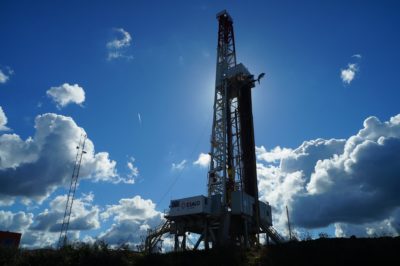A new study finds that the Environmental Protection Agency (EPA) has severely underestimated methane emissions from U.S. oil and gas development, adding to a growing body of work showing that pollution from drilling is greater than EPA figures would suggest.
The last decade has a seen a surge in concentrations of atmospheric methane, a potent heat-trapping gas, but disagreement remains as to how much, precisely, is coming from oil and gas drilling, and how much is coming from wetlands, landfills and livestock. To better gauge the footprint of oil and gas, scientists tracked emissions of ethane, a hydrocarbon known to leak from drilling wells alongside methane.
“Ethane is a gas that is related only to certain sources of methane,” said Zachary Barkley, an atmospheric scientist at Pennsylvania State University and lead author of the study. “Methane, however, is produced by oil, gas and coal fields, but also by cows’ digestive systems, wetlands, landfills and manure management. It is difficult to separate out fossil fuel produced and natural methane.”
Unlike methane, which stays in that atmosphere for around a decade, ethane lasts only a few months, making it a good indicator of recent emissions. The new study is the first to use ethane as a proxy for methane, researchers said.
Scientists tracked U.S. ethane emissions in the central Atlantic, the South and the Midwest from 2017 to 2019 across all four seasons. Using that data, they inferred that U.S. oil and gas methane emissions were 48 percent to 76 percent higher than EPA estimates. The findings were published in the Journal of Geophysical Research: Atmospheres.
The new study is part of a larger push to determine the biggest sources of methane. As part of that effort, scientists are deploying high-powered satellites capable of pinpointing emitters — a Russian pipeline, for instance, or a natural gas field in Canada. Satellite data could help governments enforce existing regulations or craft new policies aimed at curbing global methane emissions, as recently reported by Yale Environment 360.


